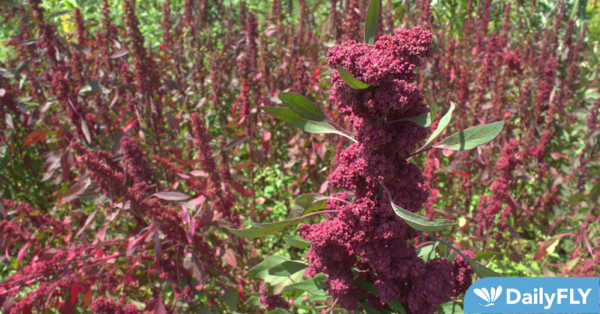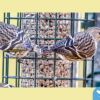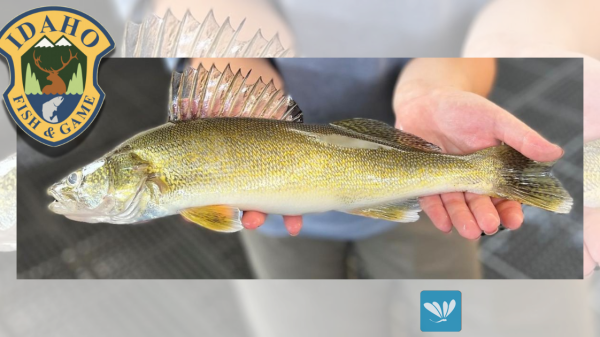PULLMAN, Wash. — Passed from grower to grower, three new quinoa varieties co-developed at Washington State University are helping farmers in Rwanda and other African countries improve nutrition and food security.
Scientists at WSU and Brigham Young University today announced the release of Cougar, Shisha, and Gikungu, new varieties of quinoa, a seed crop rich in B vitamins, minerals, and fiber and one of the few plant sources of complete protein.
“These three are the best of the thousand lines shared with us by our colleagues at BYU,” said Kevin Murphy, director of WSU’s Sustainable Seed Systems Lab.

Tall, colorful, and high yielding, each of the three varieties offers a bounty of seeds and edible leaves. Named for both universities’ mountain lion mascot, Cougar stands out thanks to its bold purple and green leaf color. In the Kinyarwanda language, Shisha means “to flourish,” while Gikungu means “economy.”
First bred in 2004 by BYU scientists Rick Jellen and Jeff Maughan, the trio were among a bank of roughly 1,000 breeding lines provided to WSU by the Utah researchers in 2012.
“Rick and Jeff’s generosity kickstarted our quinoa breeding program and greatly expanded the number of quinoa lines we selected from,” Murphy said.
Jellen and Maughan, scientists with BYU’s Plant Genetic Resource laboratory, actively seek ways to introduce new plants into the world’s food supply.
“Quinoa, with its exceptional nutritional value and ability to thrive in poor soil conditions, holds tremendous potential,” Maughan said. “However, this potential can only be realized if we develop quinoa varieties that are adapted to different environments.”
In 2014, Murphy and WSU graduate student Hannah Walters began testing Utah hybrids for yield, disease resistance, sensitivity to day length, maturation time, and other valuable traits at WSU’s Tukey Organic Farm. Two years later, selected strains were brought to Rwanda for testing by Cedric Habiyaremye, a WSU doctoral graduate and current research associate in the Department of Crop and Soil Sciences. The three new varieties performed well in Rwanda’s high- and lowlands and are ideally suited for equatorial growing regions.
“When WSU started developing quinoa specifically for Africa, it was an obvious decision to support their program,” Maughan said. “We share the common goal of improving food security globally, and the release of these varieties for Rwanda marks the fulfillment of a long-held aspiration for all of us.”

Crops for a better future
As an 11-year-old boy, Habiyaremye lived through a famine that struck Rwanda in 1997.
“I vowed that if I survived, I would go to school and find a way for people to never go hungry again,” he said.
As a WSU student, Habiyaremye discovered quinoa, theorizing the crop could do well in Rwanda, where most of the populace are smallholding farmers, as many as one in three people face hunger, and children experience a high rate of stunting and malnutrition. He introduced quinoa to Rwanda in 2015 and later co-founded a company called QuinoaHub to promote its acceptance.
For small farmers, the entire plant is useful. Quinoa can be eaten on its own, mixed with rice, ground into flour for baked products, and made into beverages. Quinoa leaves can be picked and eaten between harvests, leftover stalks serve as food for livestock, and the seeds can be stored for years without chemical treatments. Farmers are welcomed to keep seeds of the new varieties for the next season’s planting.
While testing quinoa in Rwanda, Habiyaremye gave some leftover seeds to his mother, Agnes, who planted them on her small farm. Curious neighbors saw what was growing and wanted to try it for themselves.
“My mom started her own micro-extension program,” Habiyaremye said. “She started with 11 farmers, who trained others to share the knowledge. She is now known as the ‘Queen of Quinoa.’”

From the original dozen, today more than 700 Rwandan farmers are growing these and other new quinoa varieties.
“Next is making sure quinoa can reach everyone,” said Habiyaremye, who is working with Rwanda’s Ministry of Agriculture and Animal Resources as well as farmers and research institutions in Kenya, Zimbabwe, Gambia, Malawi, Lesotho, and South Africa to extend acceptance. Maughan, Jellen, and a new BYU colleague, David Jarvis, also continue to partner with quinoa breeders in other parts of sub-Saharan and northern Africa, Latin America, and Asia.
“I want to use quinoa to combat hunger and malnutrition,” he said. “I don’t want children to go through what I did. When kids have access to nutritious foods at an early age, there is hope for a bright future.”

















